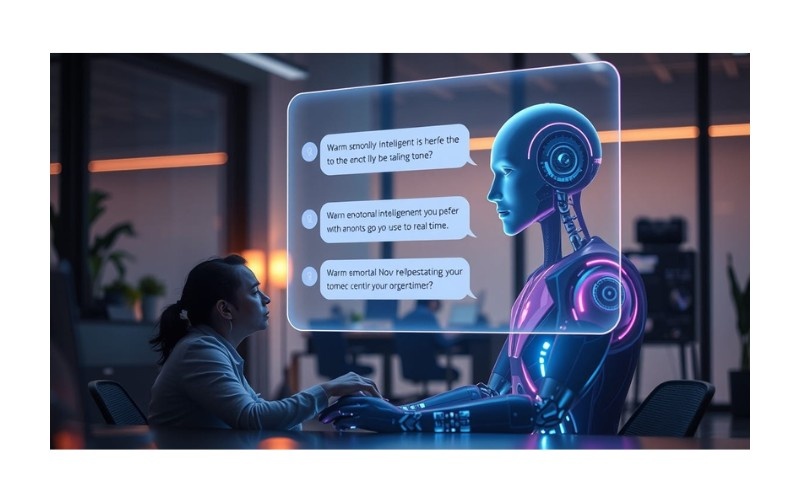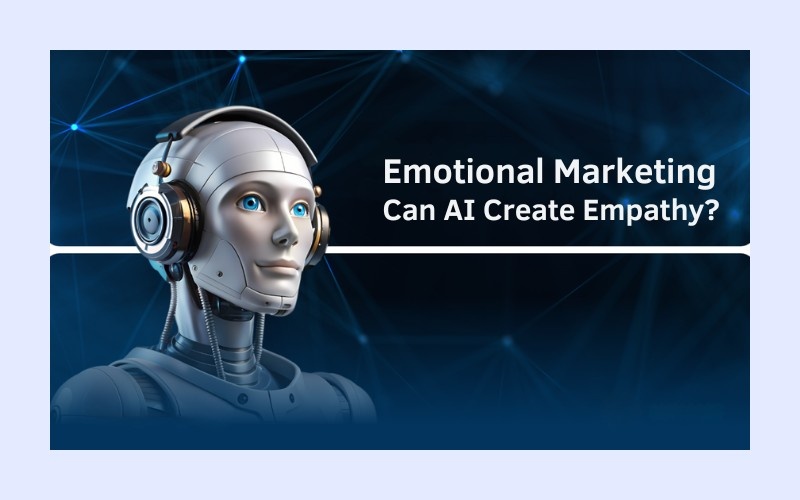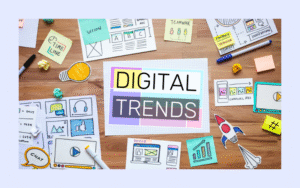Introduction: The Emotional Core of Marketing
Connection has always been about marketing. All the products, all the advertisements, all the brand messages are trying to build a relationship between the consumer and the company. In the past, such trust was developed by means of narration, graphic images, and the tone that appealed to primordial human emotions: joy, fear, nostalgia, desire, and hope. The reason emotional marketing functions is that it is on a more psychological plane that causes the consumer to make a buying decision not only because of logic, but also because of feeling. However, with automation and artificial intelligence currently becoming central to more and more areas of marketing, there is a big picture question to ask: Is it possible to automate this emotional resonance? People today live in a time where data-driven decisions are becoming the norm, and algorithms determine our fate. Can AI see, feel, or learn empathy?
The Rise of Emotional Marketing
Emotion-driven marketing is not a novelty. History has showcased some of the most memorable advertising campaigns, and these campaigns won simply because they appealed to human sentiments and not the features of the products. Consider such campaigns as Coca-Cola Open Happiness, Apple Think Different, and Nike Just Do It. These messages do not concentrate on what the products do, but on how they make people feel. It is going to be to create an emotional connection between people and the brand, and a story or a set of values that people care about.
Emotional marketing becomes effective since people are motivated by emotions, and they make decisions with them. In many psyche studies, it has been proven that consumers mostly judge an action on impulse or emotion and later justify their decision. Companies that grasp and practice this fact have better chances of earning loyalty, word-of-mouth marketing, and even premium pricing. But nowadays, when the digital communication environment is highly dominated by algorithms, there is an increasing interest in evaluating the possibility of such a high degree of emotional appeal replicability by machines.
Automation and the Changing Face of Communication
People confined in their dwellings, marketer sends a flowing process of email marketing to a numbered account; automated chat programs and social media scheduling tools are programmed through the use of artificial intelligence (AI); all of the realities of the modern marketing scene are not human-to-human. It is getting more and more machine-like. Speed, scalability, consistency, and cost effectiveness of automation are quite clear. However, such efficiencies are usually procured at the expense of detail and tailoring. The customer can feel like the robot is cold or even alienating when they get a template response written by a bot without really understanding the tone or mood that they are in.
But the technology is getting better. AI models can now analyze sentiment and reveal emotional sentiment in text, and can even give empathetic language. The latest complex natural language processing technology can adjust tone, emulate human conversational styles, and engage in real-time adaptive messaging to user behavior. Wide-ranging copywriting tools are also being introduced based on AI, which writes emotionally intelligent copy in emails, landing pages, and advertisements. However, is it empathy or is it a really fancy imitation?
What Is Empathy, and Can AI Truly Possess It?
This capacity to comprehend and identify with another is what is termed as empathy. It is related to emotional intelligence, understanding of the environment, with a feeling of belonging to a common humanity. In online marketing, emphasize the learning to feel what the target audience feels and develop messages that reassure them and inspire, motivate, or validate them.
AI is not a feeling creature by definition. It lacks consciousness, emotional experiences, and subjective awareness. What it is capable of, though, is to study data points that are related to emotional states. Let us take an example when an AI may note that a language in an email hints at annoyance and produces a apologetic, comforting message. It can study the facial expressions in videos to understand the response of viewers. It can go a step further and come up with social media lines that would cause a certain emotional outcome by using previous performance statistics. Although this is not empathy as a human trait, it is an effective simulation of what human empathy is.
This imitation can be very strong. What happens when a chatbot talks to a stressed customer and succeeds, or a personalised email reaches a point when it is needed, the user experience may barely be any different from that of a real, human communication. In this regard, AI does not have to possess empathy to become empathetic, as they only have to know what empathy is and how it functions.

The Role of Emotional Data in AI Marketing
To imitate empathy, AI uses a lot of emotional data. It consists of the way people write reviews and use social media, the way they navigate and go through sites, their clicking patterns, and even their biometric data, such as heart rate or facial movements. With such data, AI technologies can find the emotional triggers and adjust the content to them. An example here is that an AI can observe that a user weekly checks motivational material every Monday morning and will start to automate inspiring messages at the start of each week.
Artificial intelligence that is equipped with the ability to understand emotion can also divide the audience not only based on demographics or on purchase history, but also based on mood and personality as well. This enables marketers to come up with very pointed campaigns that are more personal and human. The user who displays the first signs of stress or anxiety will be shown calming, supportive messages, whereas the user who is curious and active can be subjected to more daring and optimistic content. These micro-adjustments help AI-powered campaigns to feel a lot more personal compared to the old-fashioned one-size-fits-all strategy.
Real-World Applications of Empathetic AI Marketing
Some of the brands have already started to incorporate emotionally cognizant AI into their advertisement. An example is the mental wellness app Woebot, which is powered by conversational AI and is designed to offer emotional support and cognitive behavioral therapy methods. Although there is no way to replace the human therapist, people tend to feel comforted by the encounter, which demonstrates that AI can provide actual emotional value when implemented with the correct mindset.
The example of another company, L’Oréal, created a virtual beauty assistant helping to give personal skincare advice. The bot offers more than a mere product recommendation, and it actually identifies emotional overtones, like insecurity or excitement, and responds to them differently. Along the same lines, Capital One and other banks have employed empathetic tone recognition, where chatbots will be able to navigate a more sensitive topic on the fly, including a financial setback or conflict.
Emotion analysis is also being employed by the brands within the e-commerce domain to help make decisions on how to respond to customer care requests. The AI tools will have the ability to scan through the customer reviews, their emails, or social media mentions to state that the comment is either positive, negative, or neutral. They can program a suitable answer based on that input, refer the problem to a human agent in case it is urgent, or program future effects to be more attuned to the emotional tone of the customer.
Challenges and Ethical Considerations
Along with these changes, emotional marketing with the use of AI has ethical concerns. One huge issue is that of manipulation. What would happen then is that AI would be able to know which emotional buttons to press and may abuse any vulnerabilities to motivate behaviors, e.g., by appealing to fear to sell insurance or guilt to sell charity donations. There exists a grey area between influence and manipulation, and in some cases, the customers do not even realize that their emotional data is being processed and is being used to form the interactions.
Conclusion: Can Machines Feel? No. Can They Help Us Connect? Absolutely.
Any emotion marketing may never seem to be experienced by AI, such as delight, depression, or amazement. It can, however, be trained to identify these feelings in other people, to alter its behavior relevantly, and to help the marketers in preparing messages that would get a deeper sound. That way, AI does not need empathy to enable it. The actual importance is what it can do in making us understand people better, so marketers could talk to the hearts and minds of their audiences.
The moral of the story is, at the end of the day, the automation in the era of emotional marketing will not be successful with more human machines, but with more knowledgeable, more nimble and more connected human marketers. Empathy will continue to exist as a human thing, but AI will give us a window through which we get to express it on a scale that has never been possible, with precision, and in a more precise manner.














